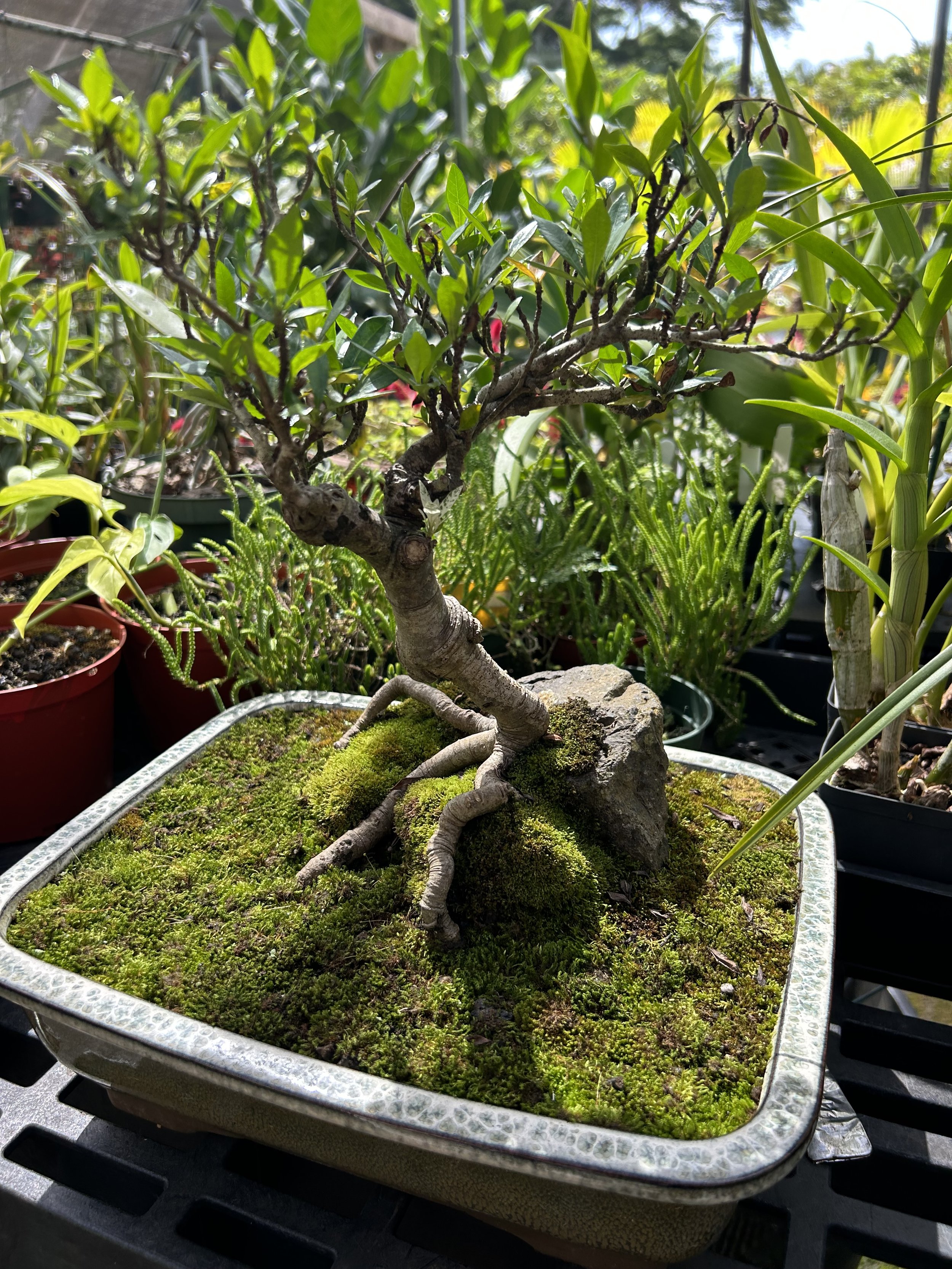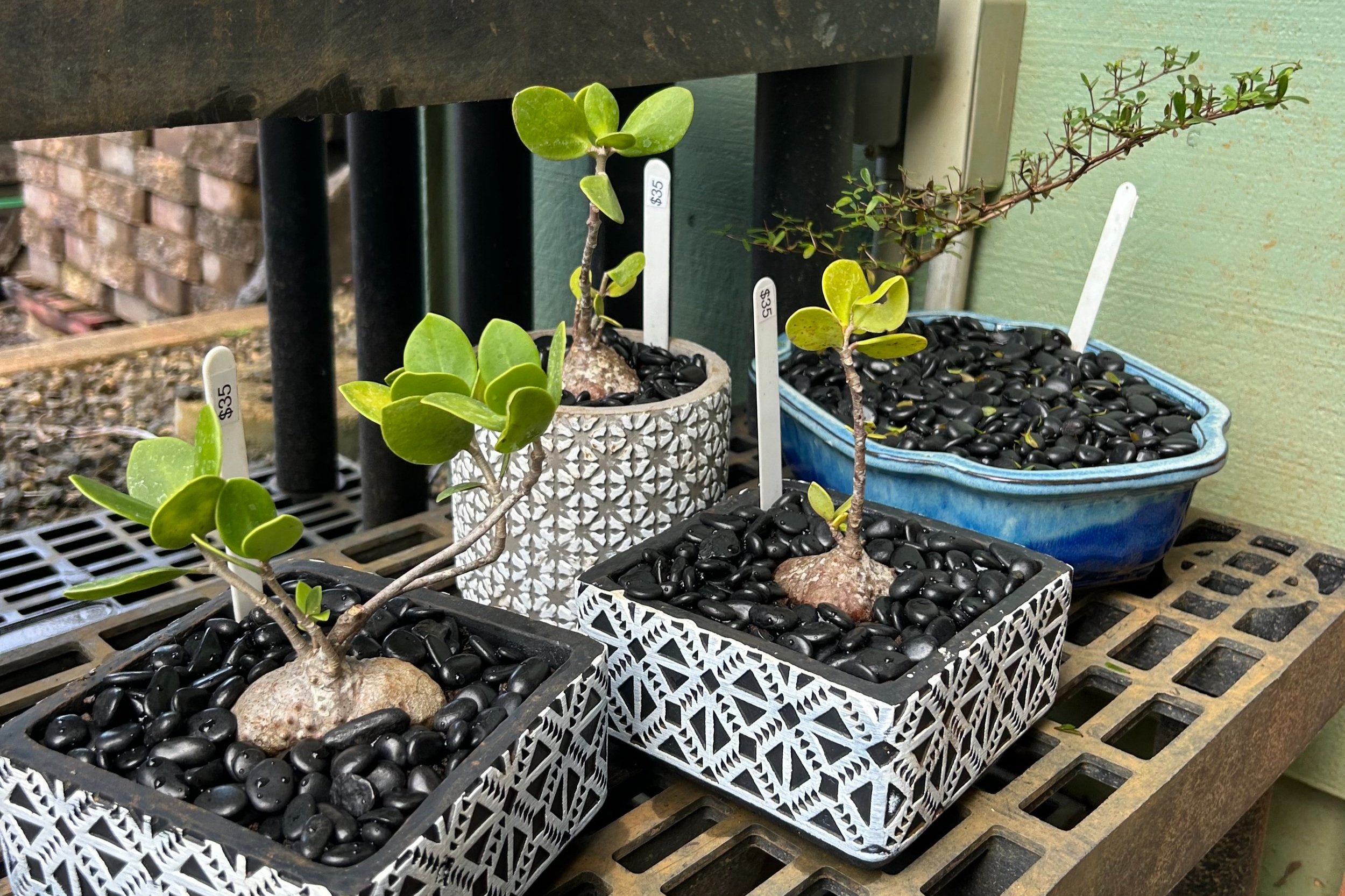The Art of Bonsai
Although the art of carefully growing dwarf trees in a container has the Japanese name “Bonsai,” the technique is an ancient Chinese horticultural practice. The Japanese word simply means “planted in a container.” The art itself has been around for over a tousand years, and has been passed down for centuries. The physical bonsai themselves are relatively ancient, having grown for 50, 100, 200+ years. Virtually any tree species can be grown and trained to be a bonsai plant. The goal of this practice is to create the realistic shape of a tree found in nature, but at a miniature size. The art of shaping bonsai requires much patience and careful attention to detail. Although intimidating at first, those interested in the challenge of cultivating bonsai can find satisfaction in the result of their dedicated care, and share their passion with others. Let’s explore the art and cultivation of bonsai.
The goal of cultivating bonsai is not to exactly replicate a tree found in nature, but to be inspired by trees naturally occurring in nature and mimic their movement. Most horticulturalists aim to have their bonsai appear as a mature tree, captured in miniature size. Some species are more successful at achieving this than others. Conifers are more likely to look mature at a young age than deciduous trees. This may be why cypress trees and junipers are common bonsai plants. But don’t feel limited! Almost any tree can be a bonsai, and choosing a specimen plant that speaks to you will make the process even more rewarding. When choosing a plant, look to nature, and see what speaks to you. Research bonsai species and find inspiration in the work of others. Pay special attention to the shape and movement of the bonsai, and what its figure evokes. Once you find a species that fascinates you, start crafting your bonsai.
You may think of bonsai as a small, desktop plant, but they can be trained to grow over 2 feet in size. Bonsai can take on a number of shapes. They can be trained upright, slanting, or cascading. The shape presents a certain attitude and sets a mood. A formal upright bonsai points to the sky, while a slanting bonsai appears to lean with the wind. Although bonsai are shielded from the elements of nature, the elements of nature can be evoked in the style. The traditional bonsai design is rooted in the rule of threes: The lowest point symbolizes the earth, the midpoint symbolizes man, and the highpoint: heaven. These points create an asymmetrical triangle shape. You can see this general shape in many traditional bonsai. Symmetrical bonsai are rare, but balance is vital. Achieving balance requires attention to proportion, line, and form.
Structure is arguably the most important factor in sculpting a bonsai. Taking into account the trunk thickness and proportion, branch spacing and direction, and root exposure and spread. A bonsai should also be designed with depth, taking into account the perspective of the tree having a front and back. The apex of the trunk should lean toward the front. Looking at the bonsai from above will make the front identifiable. With sound structure, the foundation is imperative. Planting placement is important when training a bonsai, as well as the decision to plant directly into soil or on a rock with exposed roots. Structure will help to guide the training and care of your bonsai.
Not only is plant selection imperative when creating a bonsai, container selection is just as important. Although experts would recommend a neutral colored pot, as to not take away from the beauty of your bonsai, the color choice is entirely up to you. As for size and shape, round or equilateral pots help to balance a cascading tree, while upright trees can be planted in round, rectangular, or oval pots. Bonsai pots are shallow. The depth of the pot should be the same as the thickness of the trunk’s base. The length of the pot should be ⅔ the height of the tree. Again, balance is everything. Although there are numerous methods of propagating a plant to become a bonsai, transplanting as an already established tree will be the easiest, and lucky for you, there is no shortage of potted plants here at Seascapes for you to choose from!
Any woody plant would realistically work as a bonsai. Once you’ve made your selection, remove the plant from its original pot and trim back the root ball about a third and place in a slightly smaller container. Flatten out the ball shape of the roots as best you can. Do not over prune the roots at this time. You will have to cut them back further the next replanting season, at which point you can then transfer the plant into its bonsai container. Patience is key in this process. By gradually trimming down the roots, you will get the root system to the desired size without the risk of damaging the plant.
Lastly, let’s talk about long-term care. Watering your bonsai depends on what species you have, and the climate it’s in. The best way is to monitor your bonsai’s needs rather than rely on a watering schedule. You can mist your bonsai to create a more humid climate and create more moisture. Since bonsai are contained in shallow pots, they do not have much room to retain moisture or nutrients. Regular pruning is crucial to ensure your bonsai maintains the shape you desire. Pruning should be done delicately, following these steps. First, place the bonsai on a table, standing back so it’s at eye level. Trim any dead branches and take a look to see what branches could be removed. Don’t be afraid to trim back any outgrown branches to your liking. Any low growing branches should be removed, and higher branches should be thinned out to allow spacing between larger branches.
For advanced training, you can use wiring. Wires can be used by wrapping around the entire tree from trunk to branches, or by wrapping just a few branches you wish to shape. Anchor the wire on a strong root or to the container to keep the wire grounded. Once you wrap the entire tree, you can bend the trunk and branches to your liking, gently. Apply pressure to the inside to the branch when bending to prevent the branch from splitting. Make sure to remove the wires before the bark starts growing around them. It is best to cut the wire at each turn, ensuring the removal of the wire doesn’t damage the branches. A great resource to learn more about bonsai training is bonsaiempire.com.
If you decide the process of cultivating a bonsai just isn’t for you, but you still want to enjoy their beauty, we have a number of bonsai plants potted and available here at the nursery. Stop in to see our whole selection and be inspired!



